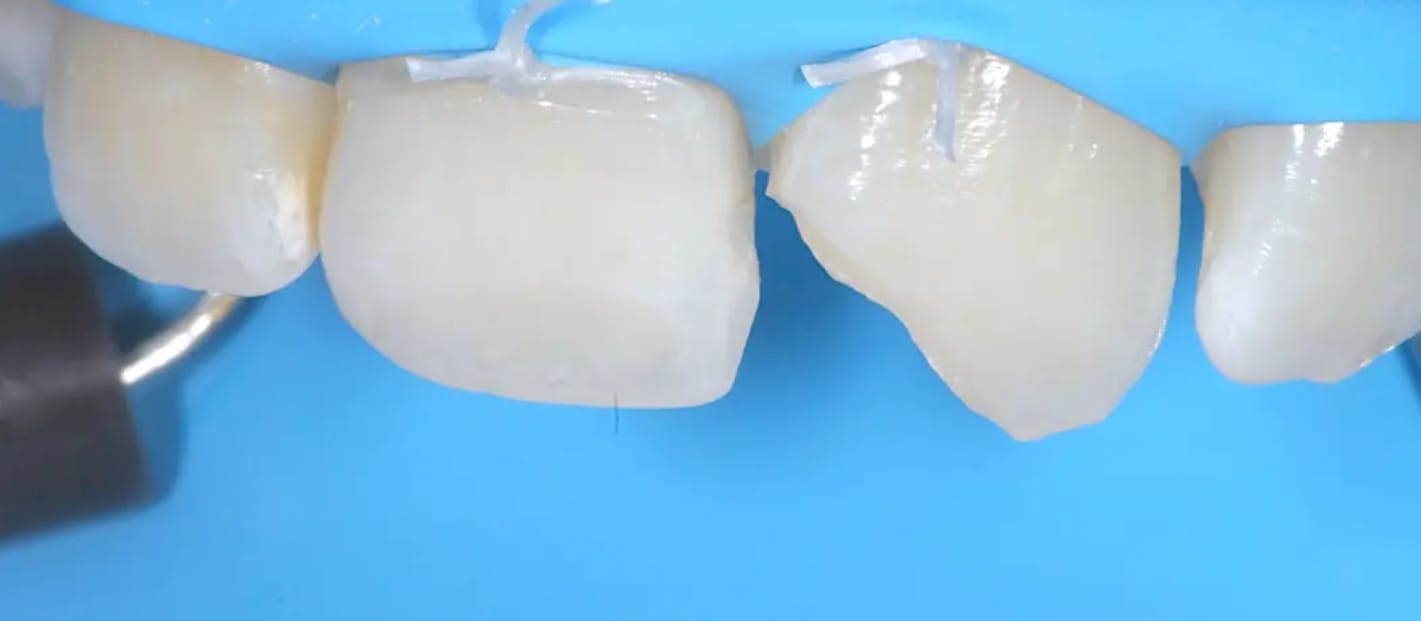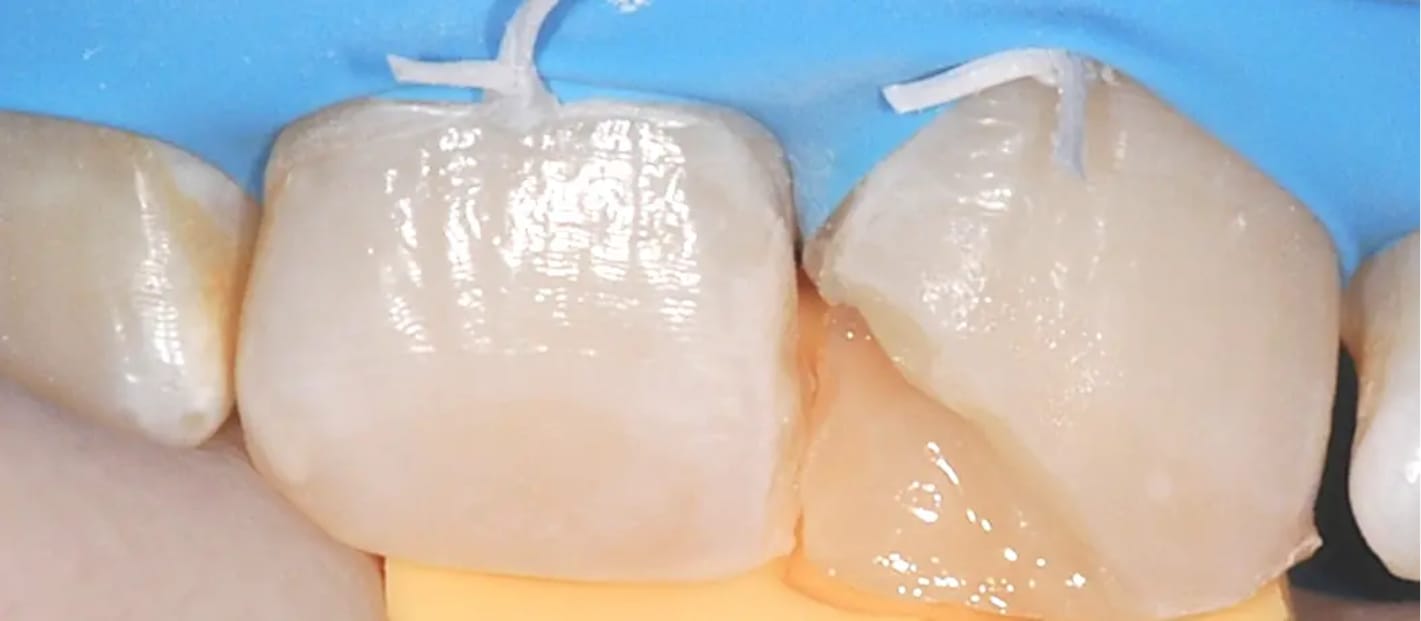The last 30 years have been marked by remarkable advances in the technology of restorative dental materials and especially dental composites. In this article we will develop in detail the advantages of reconstruction with dental composite and we will also refer to some drawbacks that technology, however advanced it may be, has not been able to fully solve, such as polymerization contraction and the stress that occurs at the interface that forms between the restorative material and the tooth. But as you well know, the success of a restoration does not depend 100% on the material and its properties, but is sensitive to the technique, so we will review the procedure so that not a single detail escapes us. Last but not least, we will assess the parameters on which the longevity of a dental composite restoration depends. Let's get started!

Source: 3M
Advantages of dental reconstruction with composites
Some of the advantages of dental restorations adhered to the structure of the dental tissue are the following:
- High aesthetics
- Reduced microleakage
- Greater preservation of healthy dental tissue
- Prevention of post-operative sensitivity
- Reinforcement of the tooth structure and improvement in the distribution of masticatory forces
We must highlight that the current dental composite is probably, is the most widely used material for restoration using direct techniques and among its most notable advantages is aesthetics and preservation of the dental structure, since being a material that is adhered by means of an adhesive technique, it does not require the design of the old and large cavities with retentive shapes.
Dental composite: a highly aesthetic material
If we refer specifically to the aesthetics provided by dental composites, we could consider it a Simpler and cheaper option than dental ceramics, which have great mechanical and aesthetic properties, however, as it is an indirect restoration, it requires a greater investment by the patient. It is the dentist who must advise the patient according to their particular clinical case, habits, expectations and economic possibilities, which is the treatment option that best suits them.

Image: Absolute isolation. Source: Kuraray, clinical case Dr. Stefano Daniele with Clearfil Majesty ES-2
Being conservative is very important, as the more healthy tissue you preserve, the greater the chances of improving the prognosis of your restoration.
The use of metal bands when preparing the cavity protects the adjacent teeth and as for the burs to use, although it depends on your preferences, as a general rule, carious lesions are removed with tungsten carbide burs and round diamond burs the most appropriate size for the cavity. Medium granulations are more recommended as they are more conservative.
Once the preparation is finished, it must be cleaned correctly in order to remove any residue, and then proceed to condition the surface with etching acid, performing a selective etching, that is, 20 seconds on enamel and 10 seconds on dentin. After this, it is washed twice as long and dried, taking care not to dry out the dentin.
You can safely etch enamel and dentin with the best etching acids available. Find them at Dentaltix.
There are many dental adhesives available on the market and the procedure will depend on the type of adhesive you use, our suggestion is always to follow the manufacturer's recommendations to obtain the best results. After applying the adhesive you can rub it for 20 seconds on the surface and apply air lightly to evaporate its solvent, it polymerizes for 10 seconds or for the time indicated by the manufacturer and a second layer is applied in the same way.
If what you need is a highly efficient adhesive, at Dentaltix we have everything you need.
Now that we have our polymerized adhesive, we can proceed with the application of the composite, which in the case of the previous sector we can create different opacities and optical effects to provide the greatest possible naturalness through the layering process. We can use a silicone guide that we have previously made and apply the first layer of enamel composite on the palatal side. Ideally, this layer should not exceed 0.5 mm and it should be polymerized for 5 seconds or according to the manufacturer's instructions. composite that we are using.

Image: Reconstruction of the palatal wall with silicone key. Source: Kuraray, clinical case Dr. Stefano Daniele with Clearfil Majesty ES-2
According to the chromatic map that we have previously established, we continue with the layering of the dentin from cervical to incisal in which we can design the dentinal mamelons according to the anatomy of the tooth, leaving an appropriate space to create an incisal halo with opaque composite. We can use a brush to soften our increments, obtaining even better results.
Finally, the vestibular layer is reconstructed with enamel composite without exaggerating its thickness to avoid an unnatural gray appearance. We must try to imitate the natural translucency of enamel and replicate the anatomy of the tooth. This layer is polymerized for 60 seconds.
Sometimes it is recommended that before polymerizing this last increment, a layer of glycerin gel is added to inhibit the oxygen layer that decreases the hardness of the surface, the resistance to wear, the stability of the color and the adaptation of the margins.
If you are a detail-oriented artist, perhaps this is your favorite part: the finishing and polishing of the restoration, which consists of removing excess composite to achieve the long-awaited naturalness of the restoration, since that surface finish directly affects the reflection and scattering of light.

Image: Contouring and polishing of the composite restoration. Source: Kuraray, clinical case Dr. Stefano Daniele with Clearfil Majesty ES-2
Diamond stones or abrasive discs of different thicknesses can be used and with the help of a Miller forceps and articulating paper it is possible to check that the contact points are correct. For the palatal surface of the restoration, the ideal is to use medium-thickness diamond stones and silicone tips, while for the embrasures, the use of polishing discs is more advisable.
And the final step for a highly esthetic and functional restoration is polishing, which you can perform with brushes, abrasive pastes, and felt discs.
Long-term results of dental reconstruction with composite
Composite restorations have a limited half-life due to various factors, among which are the presence of marginal caries and to a lesser extent dental or composite fractures, dental hypersensitivity, deterioration of the margins of the tooth-restoration interface, color changes, wear and loss of contact relationships, among others.
Currently there are various methodologies used to assess the quality of restorations, but apparently the most widely used is the one designed by Ryge et al. for the United States public health system.
Factors that determine the success of a composite restoration
To know the predictability of the treatment, different factors must be taken into account before performing a composite restoration, ranging from scientific evidence, dentist experience, patient preferences and habits, among others. For example, in patients with high cariogenic risk, composite restorations may have a lower longevity due to the presence of secondary caries.
Other important factors that can affect the longevity of restorations have to do with the skill of the operator and the quality of the composite. According to various studies, if you want to obtain an approximate figure for the longevity time of a composite restoration, we could set it at 10 years and most of the time when they are replaced it has to do with a decision by the dentist, properties of materials or patient request.
Choosing a high-quality composite increases your chances of success. Take a look at our category of composites and find the one you need.

When the failure of a composite restoration occurs gradually and not suddenly as in the case of a fracture, it is possible and preferable, from the point of view of minimally invasive dentistry, to repair the restoration instead of completely replacing it.
In conclusion, composite restorations are a great alternative to rehabilitate the anterior and posterior sectors. There are various factors that add to or subtract from the longevity of the restoration that have to do in many cases with the technique or skill of the operator, the materials or the characteristics of the patient. To achieve a good composite restoration, one must be methodical and minimize all factors that may affect the success of the restoration. The morphology of the teeth must also be known in detail, beyond their aesthetics, in their function, in order to adequately reproduce the dental morphology in both anterior and posterior restorations, without losing sight of the individual characteristics of each patient.
We hope this article has helped you hone your technique and remind you of some of the important variables in achieving a successful and long-lasting restoration. We invite you to follow us on our social media to be aware of all our content and the most up-to-date news in the dental sector. See you soon!


